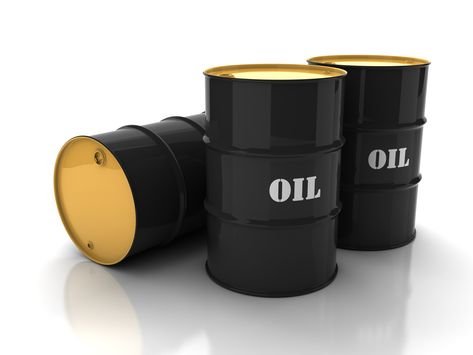On April 2, 2025, oil markets maintained a cautious stance, with prices hovering near recent highs. Traders and analysts closely monitored the anticipated announcement from the United States regarding a new round of tariffs. President Donald Trump’s administration has signaled its intent to impose “reciprocal tariffs” against key trade partners, triggering speculation across global commodity markets—especially crude oil.
Benchmark Brent crude traded around $91.20 per barrel, while West Texas Intermediate (WTI) hovered at $87.65 per barrel, showing little movement from previous sessions. Market participants adopted a wait-and-watch approach, uncertain about how new trade barriers could impact global oil demand and the broader economic outlook.
US Trade Policy Uncertainty Keeps Oil in Check
President Trump plans to unveil a new economic package aimed at protecting American industry, including tariffs on nations he accuses of engaging in “unfair trade practices.” The White House has labeled this initiative “Liberation Day,” framing it as a strategic reset for US trade relations. However, oil traders fear these measures could stifle economic growth, slow down manufacturing, and reduce demand for energy products globally.
The administration has kept details of the tariffs under wraps, though insiders suggest the target list could include China, the European Union, and Mexico—three of America’s largest trading partners. These nations also consume massive quantities of oil, either directly or through industrial supply chains.
Any slowdown in their economic output could lead to a drop in energy consumption, directly impacting oil demand forecasts. For this reason, traders remained cautious and avoided aggressive positions until they received more clarity.
Supply-Side Factors Provide Underlying Support
Despite the looming policy risk, oil prices stayed supported by several supply-side dynamics. Ongoing production cuts by OPEC+ have kept global oil inventories in check. Saudi Arabia and Russia—two of the largest exporters—extended their voluntary output cuts through Q2 2025, ensuring a tight supply environment.
In addition, recent geopolitical unrest in the Middle East disrupted oil flows from key regions. The closure of a major pipeline running through southern Iraq after a security incident contributed to temporary supply tightness. Refiners in Asia and Europe responded by boosting their purchases from West Africa and the United States, keeping spot prices firm.
US shale producers have also shown restraint in adding new rigs, opting instead to focus on capital discipline and shareholder returns. With production growth stabilizing, supply pressures remain subdued even as inventories at the Cushing, Oklahoma hub declined slightly last week.
Demand Outlook Faces Mixed Signals
While supply fundamentals support oil prices, demand indicators present a more complicated picture. The International Energy Agency (IEA) recently revised its global oil demand growth estimate for 2025 down to 1.2 million barrels per day, citing weaker-than-expected industrial activity in Europe and Southeast Asia.
Emerging markets such as India and Brazil continue to drive demand growth, but that momentum could stall if global trade suffers under new US tariff regimes. China, still recovering from recent real estate and consumer debt troubles, might also reduce its crude imports in response to slower export activity.
In the United States, gasoline demand has held steady thanks to a strong labor market and travel trends. However, rising fuel costs—combined with higher interest rates—could dampen consumer spending in the months ahead.
Financial Markets Influence Crude Sentiment
Global financial markets also played a role in shaping oil prices on April 2. Stock indices across Europe and Asia recorded modest losses, as investors trimmed risk exposure ahead of the US announcement. The US dollar gained slightly, making crude oil—which is priced in dollars—more expensive for foreign buyers. This currency strength typically puts downward pressure on oil prices, although that impact remained muted.
On the other hand, gold prices surged to $3,128 per ounce, reflecting strong safe-haven demand. The divergence between gold and oil underscored investor nervousness about global economic stability. Traders hedged against potential market disruptions while holding off on making directional oil bets.
Traders Remain Divided on Short-Term Outlook
Market sentiment in the crude space remains divided. Some analysts forecast that oil could break above $95 per barrel if geopolitical risks escalate or if OPEC+ extends its production cuts beyond June 2025. Others believe prices may fall back toward the $80–$82 range if the new US tariffs spark a wider trade war and reduce global energy demand.
“A lot depends on the tone and scope of the US trade announcement,” said Rajesh Menon, an energy strategist at a Singapore-based commodities firm. “If President Trump targets China with aggressive tariffs, we could see demand expectations soften, especially from Asia.”
Meanwhile, energy-intensive industries like aviation, shipping, and chemicals have shown resilience so far in 2025. But executives in these sectors have begun flagging concerns about rising costs and policy unpredictability, suggesting they might curb fuel purchases if uncertainty persists.
Energy Stocks Trade Sideways
Shares of major energy firms traded sideways on April 2, reflecting market indecision. ExxonMobil, Chevron, BP, and TotalEnergies saw minimal movement in early trading. Indian energy companies such as ONGC and Reliance Industries also showed muted performance, despite stable crude prices.
Oilfield service providers like Halliburton and Schlumberger remained under pressure as concerns grew about a possible slowdown in upstream investment. Analysts expect capital expenditure plans to face scrutiny if crude prices fail to breach key resistance levels.
Refineries and Petrochemical Units Stay Cautious
Refineries in Asia and Europe have begun adjusting their crude sourcing strategies. Anticipating potential supply shifts, several refiners increased purchases of medium-sour grades from Africa and the US Gulf Coast. At the same time, some downstream petrochemical producers reported slightly lower operating rates due to reduced demand for plastic resins and synthetic fibers in export markets.
In India, refiners such as Indian Oil Corporation and Bharat Petroleum maintained steady import volumes, but executives said they would reassess their strategy once the US trade policy becomes clearer.
Longer-Term Outlook Hinges on Trade and OPEC+
Looking ahead, the global oil market must balance two competing forces—geopolitical policy shifts and coordinated production strategies. If US tariffs damage international trade and dampen industrial activity, crude demand could slip. On the flip side, if OPEC+ continues limiting supply and geopolitical hotspots remain unstable, oil prices may hold or even rise.
Investors and traders will watch for upcoming indicators including:
-
Official US inventory data from the Energy Information Administration (EIA)
-
China’s oil import figures and manufacturing PMI numbers
-
OPEC+ compliance reports for Q1 2025
-
US trade announcement details and retaliation measures from affected countries
Each of these factors could move oil prices significantly in the short term.
Conclusion: Oil Awaits Direction
As of April 2, 2025, oil markets remain in a holding pattern. Prices show resilience on the back of controlled supply and geopolitical tensions, but upside momentum has stalled due to uncertainty around US trade policy. Traders have adopted a cautious stance, refraining from major bets until they gain a clearer understanding of how new tariffs will impact global economic growth and oil consumption.
The market stands at a crossroads. A dovish US announcement could spur a relief rally, while aggressive protectionist measures could trigger a wave of selling. For now, oil continues to tread water, waiting for the next policy signal to dictate its course.




